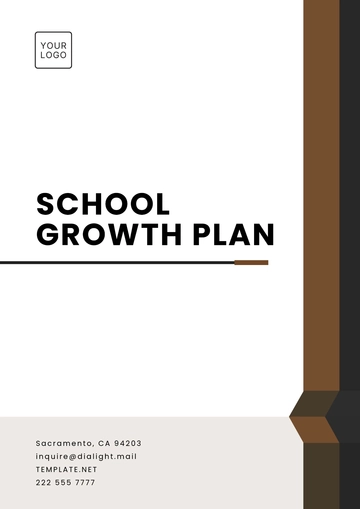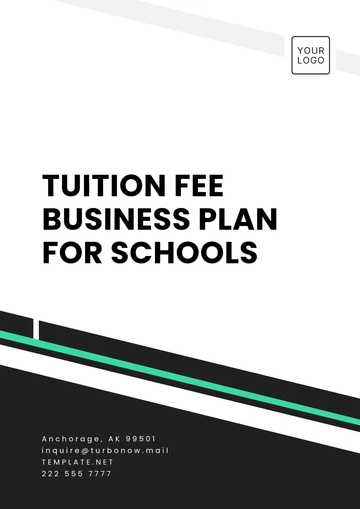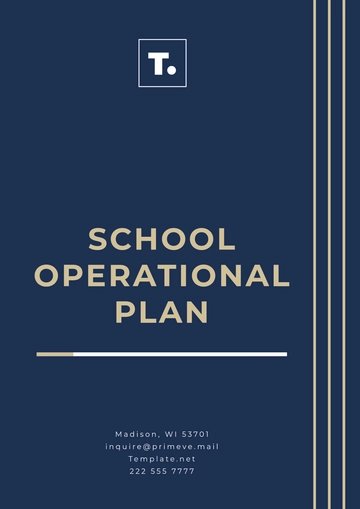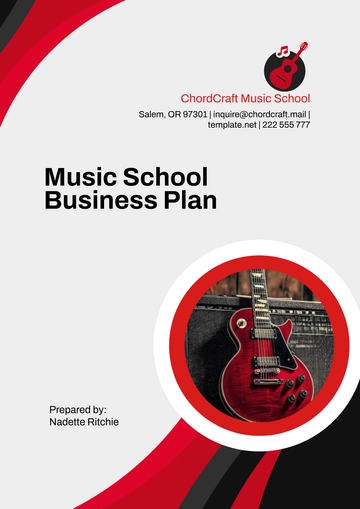Free School Business Plan Outline

1. Executive Summary
Mission Statement: What is the core purpose of the school? (e.g., providing quality education to children, fostering creativity, etc.)
Vision: Where do you see the school in 5-10 years? (e.g., becoming a leading institution in the community)
School Overview: Briefly describe the school’s concept, focus, and structure.
Business Objectives: Key goals to achieve (e.g., opening date, enrollment targets, academic achievements).
Key Success Factors: What will drive the school’s success? (e.g., excellent faculty, strong curriculum, community support)
Financial Highlights: Summarize key financial projections, including initial funding needs, projected revenue, and expenses.
2. School Description
Legal Structure: Is the school a nonprofit, for-profit, charter, private, or public institution?
Type of School: (e.g., elementary, middle, high school, specialty, etc.)
Location: The geographic location of the school and why it's ideal for the target market.
Educational Philosophy and Approach: The teaching style (e.g., Montessori, STEM-focused, traditional education, project-based learning).
Curriculum: Brief overview of the curriculum or academic programs.
Target Market: Demographics of the students (e.g., age, income, geographic region).
Competitive Advantage: What sets your school apart from others in the region?
3. Market Analysis
Industry Overview: Current trends in education (e.g., online learning, increasing focus on STEAM education).
Target Market Analysis:
Demographics: Age, income level, family structure, educational background.
Psychographics: Values, behaviors, and priorities of parents and students.
Competitive Analysis:
Direct competitors: Local schools, charter schools, private institutions.
Indirect competitors: Homeschooling, and online learning platforms.
Strengths and weaknesses of competitors.
Market Needs and Opportunities: Why is there a demand for your school, and how does your offering address that need?
Pricing Strategy: Tuition fees, scholarships, or financial aid packages.
4. Organizational Structure
Management Team: Profiles of key team members (e.g., principal, administrative staff, teaching staff, board of directors).
Governance: Overview of the school’s governance structure (e.g., independent board, parent-teacher association).
Staffing Plan: Number and types of employees needed (e.g., teachers, counselors, administrative staff, etc.), along with qualifications.
Advisors/Partners: Any external entities (e.g., educational consultants, legal advisors, community partnerships).
5. Products and Services
Core Educational Services: Detailed description of academic offerings (e.g., math, science, arts, extracurricular activities, etc.).
Additional Services: After-school programs, tutoring, lunch services, transportation, special education, etc.
Technology Integration: Use of tech tools or platforms in the classroom.
Support Services: Counseling, health services, and special needs support.
Unique Selling Proposition: Key differentiators that make your school attractive to parents and students (e.g., high teacher-student ratios, advanced technology).
6. Marketing and Sales Strategy
Marketing Plan:
Branding strategy: What message will you convey to your target audience?
Advertising: Online ads, social media, community outreach, local media, etc.
Marketing materials: Brochures, website, open house events, etc.
Sales Strategy:
Enrollment process: How will you attract and convert prospects?
Retention strategy: How will you maintain high student retention rates?
Partnerships: Collaborations with local organizations, businesses, or education-related entities.
Community Engagement: Parent involvement, volunteer programs, and local community initiatives.
7. Operations Plan
Location and Facilities: Description of the physical space, classrooms, amenities, and any potential expansion.
Hours of Operation: School year schedule (e.g., semester start/end dates, holidays).
Technology and Equipment: Any specialized equipment or software needed (e.g., interactive whiteboards, learning management systems).
Curriculum Implementation: How the curriculum will be delivered (e.g., teachers, class structure, assessment methods).
Daily Operations: Standard school day flow, from student arrival to departure.
Safety and Compliance: Health and safety protocols, adherence to local education regulations, emergency preparedness.
8. Financial Plan
Startup Costs: Initial investment requirements (e.g., facilities, materials, salaries).
Revenue Projections: Tuition fees, grants, donations, and any other sources of income.
Expense Projections: Operating costs (e.g., staff salaries, facilities, materials, utilities).
Funding Requirements: Any funding needed to start the school (e.g., loans, investments, grants).
Break-even Analysis: When the school is expected to become financially self-sustaining.
Profit and Loss Statement: Projected income and expenses for the first few years.
Cash Flow Forecast: Monthly or quarterly cash flow projections.
Balance Sheet: Overview of assets, liabilities, and equity.
9. Risk Analysis
Potential Risks: Financial, legal, operational, and market risks.
Mitigation Strategies: How you plan to address these risks (e.g., insurance, contingency planning).
Regulatory and Legal Considerations: Licenses, accreditations, and compliance with local education laws.
10. Appendix
Supporting Documents:
Resumes of key team members.
Letters of support or partnerships.
Market research data.
Sample marketing materials (brochures, website screenshots, etc.).
Detailed financial projections (spreadsheet format).
Any other relevant documentation.
- 100% Customizable, free editor
- Access 1 Million+ Templates, photo’s & graphics
- Download or share as a template
- Click and replace photos, graphics, text, backgrounds
- Resize, crop, AI write & more
- Access advanced editor
Simplify planning with Template.net’s School Business Plan Outline Template. Customizable and editable, it provides a clear structure for operational, financial, and academic goals. Editable in our AI Editor Tool, it ensures professionalism. Download it for a streamlined planning process.
You may also like
- One Page Business Plan
- Coffee Shop Business Plan
- Restaurant Business Plan
- Food Business Plan
- Real Estate Business Plan
- Executive Summary Business Plan
- Cover Page Business Plan
- Nonprofit Business Plan
- Daycare Business Plan
- Construction Business Plan
- Startup Business Plan
- Medical Business Plan
- Bakery Business Plan
- Service Plan
- Hotel Business Plan
- Catering Business Plan
- School Business Plan
- Healthcare Business Plan
- Transportation Plan
- Sports Plan
- Car Wash Business Plan
- Salon Business Plan
- Clothing Business Plan
- Farming Business Plan
- Boutique Plan





























